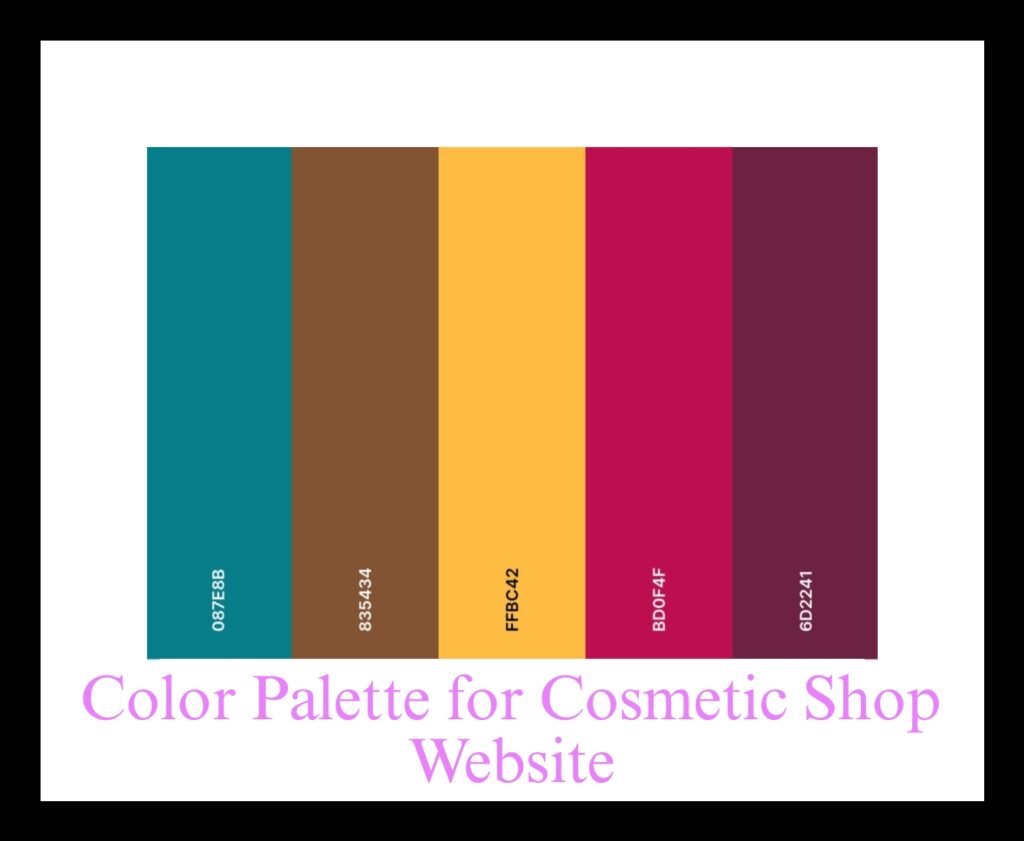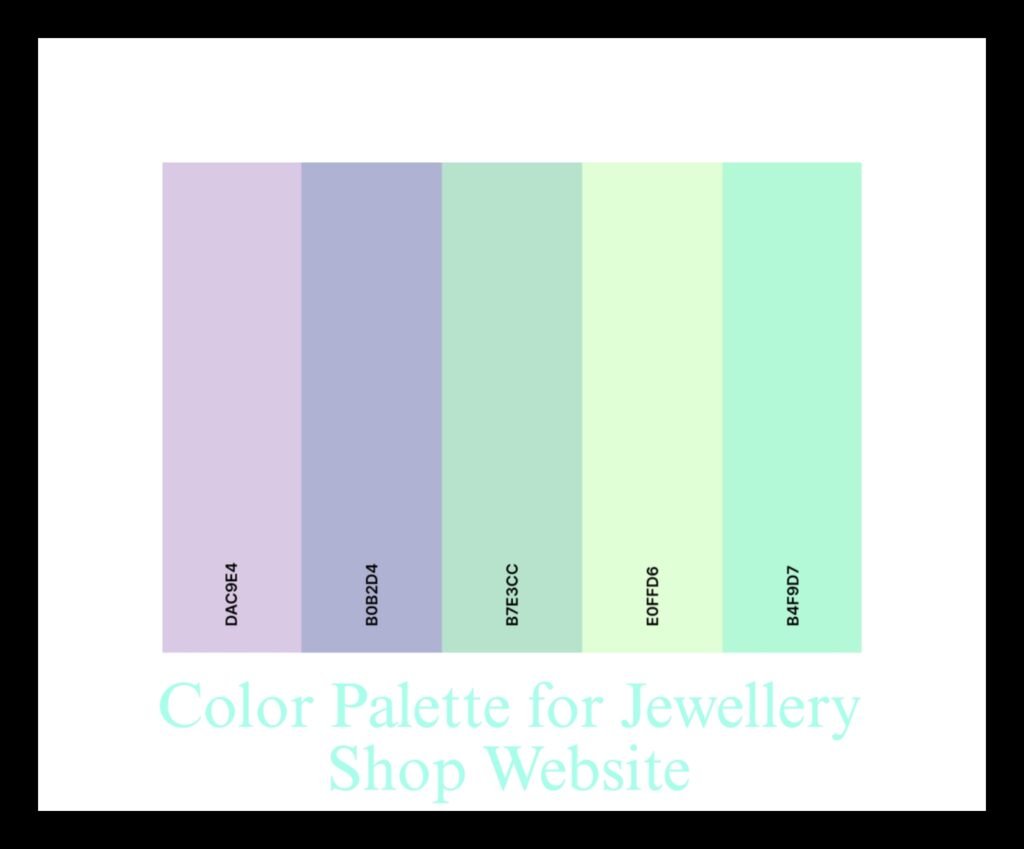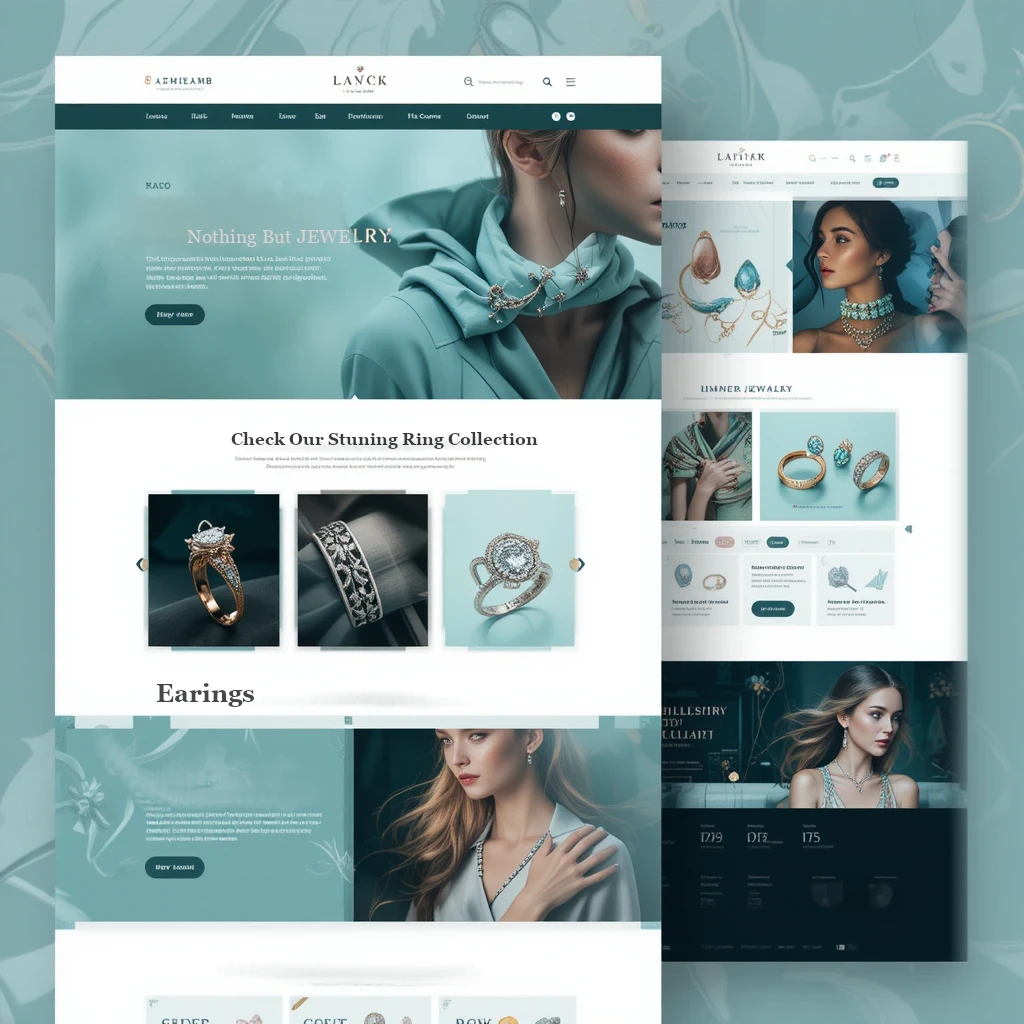Getting to Know Color Theory and Business Identity
Alright, let’s dive into color theory, shall we? It’s pretty essential for a business when it comes to shaping its identity and how people perceive its brand. Seriously, color is like one of the most powerful tools in design. It can convey value, foster trust, and stir up emotions, all of which can really sway consumer behavior. If businesses get a grip on color theory, they can whip up branding strategies that click with their target audience. I mean, each color has its own vibe and associations that can really tell a brand’s story. Take a tech company, for example—it might pick blue to give off that professional and reliable feel. Meanwhile, a food brand could go for warm colors to make folks feel hungry and comfy. So yeah, color totally shapes how a company shows up and how it’s seen in the market.

Color in Design: The Basics
Now, when we talk design, color isn’t just about looking pretty—it’s also a key player in guiding how users interact and experience stuff. Designers use color to create visual hierarchies, highlight what’s important, and keep the brand looking consistent across different platforms. Choosing the right colors can really grab attention and keep it there, making designs work better. Plus, how colors mix and match can change how someone processes information—like, it can either enhance or mess with the message you want to get across. A thoughtfully put-together color palette can turn a plain design into something engaging and immersive, encouraging users to dig deeper into the content.
Why Color Matters in User Experience
So, color plays a huge role in shaping user experience (UX) both online and offline. The way color is used can really help with navigation, create emotional ties, and boost usability—all of which can lead to happier users and better retention rates. Think about it: using contrasting colors can make things easier to read and highlight the important info, while smooth color combos can make everything feel more chill and comfy. Oh, and certain colors can nudge users to take action—ever notice how red is often used for call-to-action buttons? It really creates that feeling of urgency! By getting how color affects user behavior, businesses can create experiences that not only please users but also achieve the goals they’re aiming for.
The Psychology of Color
Alright, let’s not forget the psychological side of colors, which is a pretty fascinating topic. Research shows that different colors can really impact our moods and behaviors. Each color brings out specific feelings and reactions, influencing everything from whether we decide to buy something to how loyal we are to a brand. For instance, warm colors like red and orange can pump up excitement and energy, while cooler shades like blue and green tend to promote calmness and trust. This is super important for businesses looking to connect with their customers on a deeper level. By picking colors that resonate with their brand values and tap into their audience’s emotional triggers, businesses can create powerful branding that really sticks around.

Connection between colors and brand identity
You know, color really does play a huge role in branding. It’s like this visual language that tells us a lot about a company—its identity, its values, and its overall vibe. Each color can spark certain feelings or associations, which helps brands connect with their audience on a deeper, psychological level. Take blue, for example. It’s often seen as trustworthy and reliable, which is why you’ll see it pop up a lot with banks and tech companies. Then there’s red, which brings excitement and a sense of urgency—perfect for fast-food places that want to get you hungry and making choices fast. So, when brands pick their colors, they’re doing way more than just making things pretty; they’re using color as a smart way to build emotional ties with consumers.
When you look at the relationship between colors and brand identity, it’s pretty fascinating how consumer psychology comes into play. Brands use color not just to stand out from the crowd but to share their core values and missions. Green, for instance, is a go-to for companies that care about sustainability and eco-friendliness—think Whole Foods or The Body Shop—tapping right into what consumers are increasingly looking for these days. And then, on the flip side, luxury brands like Chanel and Gucci choose black and gold to scream elegance and sophistication. This whole mix of color and brand identity creates a unified image that folks can spot and connect with easily, building up that all-important brand loyalty and trust.
There are tons of well-known brands that really nail this strategic use of color. Just look at McDonald’s! Their logo is all about red and yellow, which brings out feelings of happiness and excitement. Plus, it gets your appetite going, right? Then there’s Facebook, with its blue branding that symbolizes trust and communication—totally in line with their goal of connecting folks all over the world. And let’s not forget Tiffany & Co., which has that unique robin’s-egg blue. It just screams luxury and exclusivity, setting them apart in a crowded jewelry market. So, as you can see, color isn’t just a pretty detail—it’s a core part of how brands express who they are and engage with us, their consumers. Isn’t that interesting?

Color Psychology and Consumer Behavior
So, color psychology—what’s that all about? It’s really fascinating! It’s the exploration of how colors influence our feelings, perceptions, and even the way we behave. When it comes to shopping, color is like a secret weapon for brands. It can totally sway a customer’s choices. Each color brings forth its own emotional vibes and associations, which is why it’s super important for businesses to pick their color schemes wisely to connect with their audience. Think about it: blue can chill you out, while orange might get you pumped up. Companies use these colors to tap into those feelings, making sure they align with what they stand for.
Overview of Color Meanings and Associations
Colors don’t just look pretty—they carry a ton of meaning! And guess what? Those meanings can change depending on where you are in the world. Take blue, for instance; it’s often seen as trustworthy and dependable. Red? Well, that’s all about excitement and urgency. Then there’s green, which is associated with nature and health—perfect for promoting tranquility. And yellow? It’s that warm hug of optimism! By understanding these color associations, marketers can really craft their visual identities to match their messaging. When they nail the right colors in their packaging or ads, they can build a deeper bond with consumers and win their loyalty.
Building Trust with Color Selection
Let’s talk about trust—especially in industries like finance and insurance, where it’s everything! The colors a brand chooses can either build or break that trust. Blues and greens are great for giving off a sense of security and reliability. Just think about it: when you’re making a big financial choice, you want to feel reassured, right? Brands that use colors known for trustworthiness don’t just bolster their image; they create an emotional connection with their audience that can last for ages.
How Certain Colors Convey Reliability
Now, certain shades can send strong messages about reliability—this is crucial in areas where people need to feel confident. For example, banks love their blue! It’s a classic move that screams trustworthiness. Look at brands like American Express and Chase; they’ve built their whole identities around this color, showing they’re stable and committed to their customers. Green pops up a lot in insurance, too, signaling growth and safety. It’s all about tapping into what consumers really want—peace of mind with their finances.
Case Studies of Financial and Insurance Industries
If you look at some case studies from finance and insurance, it really drives home just how powerful color psychology can be. Prudential’s blue branding? It nails that vibe of reliability and professionalism, reinforcing trust among consumers. And let’s not forget the whole “color of trust” campaign that various banks launched, using different shades of blue in their marketing. This wasn’t just random; it aligned perfectly with what consumers expect, boosting brand recognition in a crowded marketplace. On the flip side, companies like State Farm and Allstate lean into green to show they care about customer safety and support, which just deepens those relationships. These examples really highlight how crucial color is in shaping what consumers think and driving a company’s success.
So, next time you’re out shopping or even just browsing online, take a moment to notice the colors around you. There’s a lot more going on than meets the eye!

Seasonal and Trend-Based Color Choices in Web Design
You know, when it comes to web design, picking colors goes way beyond just looking pretty. Colors can really shape a brand’s identity and how users connect with it. As tech moves forward and what people like changes, we see fresh color trends popping up all the time, reflecting what’s in the air during each period. Take 2023, for example—color palettes this year seem to be all about mixing vibrant tones with those soft pastels. It’s kinda like finding that sweet spot between feeling energized and staying calm. Designers are really digging colors that feel real and relatable, often pulling from nature with earthy greens and gentle blues, but they’re also throwing in some bolder shades like coral and mustard to keep things exciting.
Now, let’s talk about how the seasons play into all of this. As the seasons shift, so do the feelings and experiences we associate with them, right? That’s why designers often switch up their color choices to match what folks are feeling at the time. For instance, spring usually brings these floral palettes, full of soft pinks and yellows that just scream freshness. Then you hit fall, and it’s all about those warm, cozy hues—think burnt orange and rich browns. Plus, holidays like Christmas and Halloween? They totally inspire color schemes that have cultural meaning. You’ll see reds and greens for Christmas cheer, while Halloween might call for fun purples and oranges. By mixing it up according to the seasons or special occasions, designers can really create an experience that resonates with users and keeps the brand feeling relevant.
There are some great case studies out there that really show how effective these seasonal shifts can be. For instance, one well-known e-commerce site revamped its homepage for summer, splashing in bright, tropical colors that just radiated fun and adventure. And guess what? It led to a big jump in user engagement! In another example, a financial services site decided to refresh its color palette for the winter holidays. They leaned into soft blues and twinkling whites to create feelings of trust and calm, which worked wonders for customer interactions during a busy shopping season. These real-life stories highlight just how important it is to stay in tune with color trends and the seasons. It really drives home the idea that color isn’t just about looking good—it’s a key part of crafting a great user experience in web design.
Tailoring Color for Target Audiences
You know, when it comes to choosing colors, it’s not just about picking what looks pretty. It’s really about getting to know your audience on a deeper level. Color can say a lot—it communicates feelings and ideas—but its effects can totally differ based on things like age, culture, and what people personally like.
So, before you dive into picking a color palette, take a moment to think about who you’re aiming for. Consider their age, gender, what they do for a living, and their cultural background. For example, if you’re targeting a younger crowd, bright, lively colors—think neon greens or electric blues—can really grab attention and create that buzz of excitement. On the flip side, if you’re focusing on a more mature audience, you might want to lean towards softer, more sophisticated colors like muted greens, calm blues, or earthy tones. These hues can give off vibes of trustworthiness and stability.
And hey, let’s not forget about gender—though the lines are a bit blurrier these days. Traditionally, brands that aimed at women often used pretty pastels, while brands aimed at men went for those bold, dark shades. But, and this is a big but, it’s super important to steer clear of stereotypes. You really need to do your homework to make sure your color choices hit home with your audience.
At the end of the day, it’s not just about following strict guidelines. It’s about crafting a visual identity that genuinely connects with the people you want to reach. It’s about making a statement that resonates. So, go ahead, experiment and find what speaks to your audience!
The Role of Accent and Background Colors
You know, when it comes to visual design, the way we use accent and background colors really matters, right? It’s not just about looking good—those colors can totally change how people feel when they interact with a design. So, accent colors, they’re like the spotlight on a stage. They grab your attention, highlight what’s important, and just make everything feel more lively. They work alongside the main colors to add a bit of flair and personality to the whole thing.
Now, background colors, they’re the unsung heroes. They set the stage, so to speak, for everything else. Picking the right background color is super important if you want those primary colors to really shine. Like, imagine a soft, light background—it can make those bright colors just pop out at you. On the flip side, a darker background? That can bring a touch of elegance and depth, especially when you throw in some bright accents.
You’ve got tons of options out there! Think about classic combos—like white and blue with a little yellow to spice things up. Or maybe you’re into something more contemporary, like a soft grey backdrop with teal and coral pops. It’s all about what vibe you’re going for, what your brand stands for, and what you want the design to accomplish. So, really, finding that perfect mix? It’s key to creating something that not only looks good but feels right, too.

Accessibility in Color Choices
You know, when it comes to web design, making things accessible really should be at the top of the list. One of the big pieces of that puzzle is picking the right colors. I mean, we’ve got these standards out there, like the Web Content Accessibility Guidelines (WCAG), and they’re super important. They basically help ensure that everyone, including folks with disabilities—especially those who struggle with seeing—can navigate websites without a hitch.
Now, let’s talk about color palettes. It’s not just about making things look pretty; it’s about creating combinations that have enough contrast between the text and the background. That’s key! If we want to include everyone, we have to think about things like color blindness and low vision when we’re choosing our colors.
But here’s the good news! There are tons of tools available to check how well your colors stack up in terms of contrast and accessibility. So, designers can really dive deep and make smart choices. In the end, it’s all about crafting websites that not only look great but also work well for everyone, right? Isn’t that what we all want?
Cultural Sensitivity in Color Choices
Color is such an interesting thing, right? I mean, it seems like it should be the same everywhere, but in reality, it’s loaded with cultural meanings that can change drastically from one part of the world to another. What’s bright and cheerful in one culture might be seen as dull or even offensive in another. So, for brands trying to make a mark internationally, grasping these subtle differences is super important.
Take white, for instance. In many Western countries, it’s all about purity and, sadly, mourning too. But flip that coin, and in some Eastern cultures, white is pretty much just a symbol of death and funerals. Then there’s red—oh boy, it’s a real mixed bag! In the West, it screams love and passion, while in China, it’s all about prosperity and good luck.
These differences really make companies think hard about how they present themselves visually and in their marketing campaigns. The brands that really nail it? Well, they often shift their color choices to fit different markets, showing they understand and respect local cultures. It’s fascinating to see case studies of brands that either hit the jackpot or stumble due to their grasp—or lack thereof—of local color meanings.
In a melting pot like Dubai, where so many cultures come together, this need to adapt colors is even more crucial. Brands that want to thrive there have to tread carefully through a complex web of cultural interpretations. They really need to fine-tune their visual messages to ensure they resonate well with the emirate’s diverse population. It’s all about making those connections, right?
Tools and Resources for Choosing Color Palettes
Picking the right color palette? Yeah, it can feel a bit overwhelming at times. But hey, there’s a ton of tools and resources out there to help designers navigate this colorful world. You’ve got your online color palette generators—think Adobe Color, Coolors, Paletton. They’re pretty awesome for getting started. Just toss in a base color, and boom! You’ll get a bunch of complementary, analogous, or triadic palettes to choose from.
Now, here’s the trick: get to know what each platform offers. Play around with those adjustment sliders, check out different color harmony rules, and don’t forget—you can upload images to pull color schemes right from them! To really make the most of these tools, it’s good to have a grasp on basic color theory. Experiment with various palette types, and keep accessibility in mind; making sure there’s enough contrast is key for readability.
But wait, there’s more! Inspiration is literally all around us, especially from the websites we visit every day. Take a moment to explore sites that are visually striking. Look closely—how do they use color to set a mood or convey their brand’s identity? Pay attention to how primary, secondary, and accent colors balance out across different design elements.
And let’s not forget about the influence of different markets. Take Dubai, for instance—a place where luxury meets rich heritage. You might notice their websites often feature warm tones like gold and beige paired with bolder shades like deep blues or greens. This combo reflects both the vibrant culture and the city’s modern aspirations. By digging into successful color schemes, designers can totally adapt and refine their own palettes. This way, they create designs that not only stand out but also resonate with the diverse audiences they’re aiming for. It’s all about crafting something impactful and culturally relevant, you know?
Wrapping It Up
Alright, let’s wrap things up by revisiting some key takeaways, shall we? We’ve dived deep into the basics of color psychology and how you can use different colors to stir up specific feelings. Plus, we talked about why making your designs accessible is super important.
We also looked into how to pick color palettes that fit the vibe of different businesses. Think about it: the calming blues and greens work wonders for corporate settings, while the lively reds and yellows can really pop in creative fields.
So, as you set out on your color selection adventure, keep these handy tips in mind: Do a little homework on your audience, make sure everything’s easy to read, get a grasp on color harmonies, and stick to your brand’s look and feel. Oh, and don’t shy away from mixing things up! Try different combos and ask for input from users, clients, and coworkers. You know, the best color palette often comes from a bit of trial and error.
Now, it’s your moment! We’re excited for you to put these ideas into action. We’d love to hear about your journey, so drop your thoughts, color picks, and any hurdles you’ve faced in the comments below. Let’s learn from one another and work together to make the web a more visually stunning place!



Leave a Reply